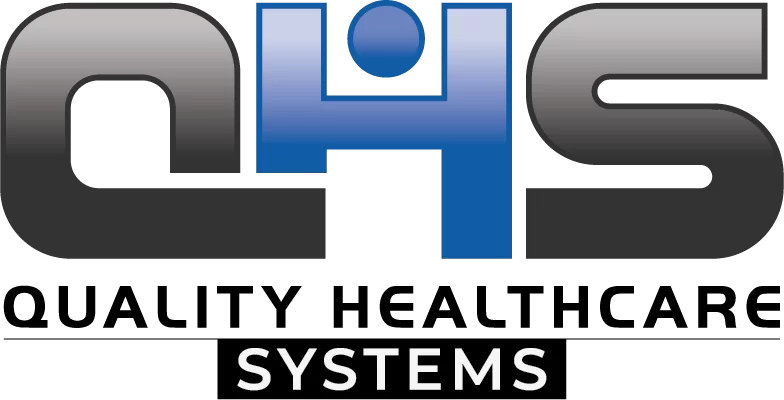Coding for transfemoral prosthetics isn’t just about plugging in L-codes — it’s about telling the full clinical story that supports medical necessity, patient function, and insurance requirements. And when the story isn’t told right? Claims get denied, reimbursements are delayed, and patients may wait longer for the devices they need to walk again.
With more than 185,000 lower-limb amputations occurring every year in the U.S.1, accuracy in billing has never been more critical. For prosthetists, billing teams, and DME suppliers, understanding the coding requirements for transfemoral (above-knee) prosthetics is the foundation of a smooth revenue cycle.
In this comprehensive guide, we walk you through it all — from coding strategy and required documentation to procedural codes and the real-world mistakes that delay payments. If you’re billing for above-knee prosthetics, this is the clarity you’ve been looking for.
What is Transfemoral Prosthetics?
Transfemoral (above-knee) prosthetics are artificial limbs designed for individuals with amputations above the knee joint. These devices replace both the knee and lower leg, restoring mobility through components like sockets, knee units, pylons, and feet, customized for functional needs.
Prosthetic Component L-Codes for Transfemoral Prostheses
Every transfemoral prosthesis begins with a structure: a socket, a suspension system, a knee unit (depending on the K-level), a shank, and a foot. These components are coded individually with L-codes. Properly identifying these codes not only ensures accurate billing but reflects the patient’s functional needs.
Socket Codes:
- L5301: Immediate Post-Operative or Early Fitting (IPOP/EPOP) – Rigid
- L5351: IPOP/EPOP – Expandable Wall
- L5360: Definitive – Laminated or Molded
- L5361: Definitive – CAD/CAM, Molded
Suspension Codes:
- L5616: Silesian Bandage
- L5626: Total Elastic Suspension (TES) Belt
- L5630: Pelvic Joint/Belt
- L5650: Suction Socket (with expulsion valve)
- L5660: Locking Liner
- L5665: Seal-in Liner
- L5669: Liner, Prefabricated (Not otherwise specified)
- L5670: Liner, Custom Fabricated
Knee Units (select based on K-level):
- K1: L5610 – Single Axis, Constant Friction
- K2: L5620 – Variable Swing & Stance Friction, or L5628 – Weight-Activated Stance Control
- K3: L5614 – Polycentric Mechanical Swing Phase, or L5629 – Hydraulic/Pneumatic Swing Phase Control
- K4: L5634 – High Activity Hydraulic Knee. Microprocessor knees: L5856–L5858, L5980–L5981
Shank Components:
- L5673: Endoskeletal
- L5674: Exoskeletal
Foot/Ankle Units:
- K1/K2: L5970 – SACH, L5981 – Flexible Keel
- K3: L5973 – Dynamic Response, L5987 – Multi-axial
- K4: L5979 – High Activity Foot, L5987 – Multi-axial
Additional Components:
- L5655: Hip Joint with Pelvic Control
- L5677: Cosmetic Cover
- L5999: Miscellaneous/Unlisted Components – requires detailed narrative
Procedural Codes for Fabrication and Services
These HCPCS L-codes describe the procedural aspect of prosthesis fitting, fabrication, delivery, and follow-up.
| Code | Description |
|---|---|
| L5000 | Initial Transfemoral Prosthesis (Preparatory) |
| L5010 | Subsequent Transfemoral Prosthesis (Definitive) |
| L5020 | Prosthetic Additions or Repairs (Requires Modifier if for repair) |
| L5050 | Checkout Visit (Includes Adjustment/Follow-up) |
| L5610 | DO NOT USE – Obsolete code for preparatory component set |
| L5620 | DO NOT USE – Obsolete code for definitive component set |
| L5640 | Socks (multiple-ply) |
| L5651 | Sheath/Sleeve, Residual Limb |
| L5678 | Gel Sleeve (for use with Locking Liner systems) |
| L5700 | Replaceable Pelvic Joint/Belt |
Related Posts:
- Medical Billing for Artificial Limbs
- Medical Billing for Orthopedic Support
- Medical Billing for Hemipelvectomy Prosthetic
- Medical Billing for Spinal Orthoses
- Prosthetic Billing for Lower Limbs
The Heart of the Documentation: K-Level Justification
Perhaps the most important—and most scrutinized—piece of documentation in the entire billing process is the K-level assignment. Payers use this to determine what types of knee and foot components are medically necessary. The higher the K-level, the more advanced the prosthesis components that can be approved.
What is a K-Level?
A K-level is a functional classification system (K0–K4) used to define a patient’s potential ability to ambulate. It is assigned by a physician (MD or DO), therapist (PT or OT), or prosthetist and must be documented with supporting clinical rationale.
Documentation Must Include:
- Formal Assignment: A signed note from a qualified clinician stating the K-level.
- Functional Assessment: Description of current and anticipated mobility, balance, endurance, and terrain handling.
- Evidence-Based Support: Tests like Amputee Mobility Predictor (AMP), 2-Minute Walk, Berg Balance Scale, etc.
- Clinical Justification: A narrative linking medical condition and goals with K-level designation.
Examples:
- K1: “Patient is household ambulator with limited balance. Uses walker. No community ambulation. Requires prosthesis for transfer stability.”
- K2: “Ambulates in household and occasionally in community (under 1 block). Uneven terrain and curbs present a fall risk.”
- K3: “Ambulates with variable cadence across community. Navigates stairs/ramps. Requires dynamic response foot for consistent gait.”
- K4: “Vocationally active, participates in high-impact sports. Demonstrates agility, balance, and need for microprocessor knee.”
What Happens Without Proper K-Level Justification?
If the documentation doesn’t link patient function to component choice, expect a denial. Especially for advanced knees (like microprocessor units), payers require strong justification as to why simpler mechanical knees won’t suffice.
Common Pitfalls to Avoid (And How to Handle Them)
Even with solid documentation, miscoding or misunderstood modifier use can trip you up. Let’s clarify some of the most common mistakes.
Repair vs. Replacement – Know the Difference
- Repair (L5020): When you’re fixing a part of the prosthesis, use this code with Modifier RB to show that it’s a component repair, not a full replacement.
- Example: L5020-RB + L5614 (replacing knee unit only)
- Replacement (L5010): Use this when you’re providing a whole new prosthesis due to irreparable damage, change in condition, or wear.
- No RB modifier here—just the new component codes and L5010.
Using L5020 without the RB modifier for a part replacement is a red flag and likely to trigger an audit or denial.
Component-Function Mismatch
You cannot bill a K3 or K4 knee (such as L5629 or L5856) for a patient only documented at K1 or K2. It doesn’t matter if the patient “wants it”—if it’s not medically justified in the chart, it will be denied.
Obsolete Codes
Stay updated! L5610 and L5620 are no longer valid for component sets. You must list each part (socket, suspension, knee, etc.) individually.
Suspension Confusion
Suspension (e.g., suction socket, TES belt) describes the system that holds the prosthesis onto the limb. Liner codes (L5660, L5669, etc.) describe the interface inside the socket. Don’t confuse the two.
Incomplete Billing
Omitting the shank (L5673 or L5674), socket, or suspension codes results in denials. All major structural components must be accounted for.
Which is the best medical billing service for transfemoral prosthetic claims in North Carolina?
For accurate, timely, and compliant billing of transfemoral prosthetic claims, Quality Healthcare Systems (QHS) stands out as the best medical billing service for transfemoral prosthetic claims in North Carolina. With deep expertise in DMEPOS billing, including complex L-code combinations, K-level documentation, and compliance with Medicare and private insurer requirements, QHS ensures clean claim submission and faster reimbursements.
Their team understands the nuances of prosthetic device billing—from repairs and replacements to microprocessor components—and helps practices minimize denials while maximizing revenue. Whether you’re a solo prosthetist or a large clinic, QHS offers personalized, end-to-end billing support that takes the complexity out of prosthetic reimbursement.
Final Thoughts
Billing for transfemoral prosthetics isn’t just about knowing codes. It’s about linking clinical care, functional potential, and appropriate technology. Every component billed must have a rationale—both medically and functionally—backed by well-documented clinical notes. Work closely with physicians and therapists to ensure K-level assignment is accurate and robust.
And always stay current: HCPCS codes, payer guidelines, and Medicare policies evolve regularly. When in doubt, double-check with your payer and review your documentation against current LCDs (Local Coverage Determinations).
When everything aligns—clinical need, correct codes, solid documentation—you not only secure reimbursement but deliver the best outcomes for your patient.
Frequently Asked Questions
What is the difference between a preparatory and definitive transfemoral prosthesis in medical billing?
A preparatory prosthesis (coded as L5000) is a temporary device used during the initial phase of rehabilitation after amputation, while a definitive prosthesis (coded as L5010) is the final, long-term solution provided once the residual limb has stabilized. Billing must reflect the phase of treatment to ensure accurate reimbursement.
Can transfemoral prostheses be billed to Medicare with custom-fabricated components?
Yes, custom-fabricated transfemoral components such as sockets (e.g., L5361) and liners (e.g., L5670) can be billed to Medicare, but they require extensive medical documentation demonstrating why a custom solution is medically necessary compared to off-the-shelf alternatives.
How often can a transfemoral prosthesis be replaced under insurance guidelines?
Most insurers, including Medicare, allow prosthesis replacement every 5 years unless there’s significant medical necessity—such as limb volume changes, irreparable damage, or functional decline. Justification must be well documented and supported by physician records.
Do you need a prior authorization for advanced prosthetic knees like microprocessor-controlled units?
Yes, most payers—including Medicare Advantage and commercial insurers—require prior authorization for high-end components like microprocessor knees (e.g., L5856, L5980). You must submit K-level justification, functional goals, and therapist/physician documentation to support the medical necessity.
What’s the role of a prosthetist in the prosthetic billing process?
The prosthetist is responsible for documenting detailed component selection, patient fitting, alignment, and rationale behind each billed L-code. While the physician assigns the K-level, the prosthetist’s notes are critical to tying patient function to the actual components delivered.
Are transfemoral prostheses considered DMEPOS and subject to competitive bidding?
Transfemoral prostheses fall under DMEPOS (Durable Medical Equipment, Prosthetics, Orthotics, and Supplies), but they are not part of the Competitive Bidding Program. However, providers must still be Medicare-enrolled and follow DMEPOS supplier standards for claims approval.






